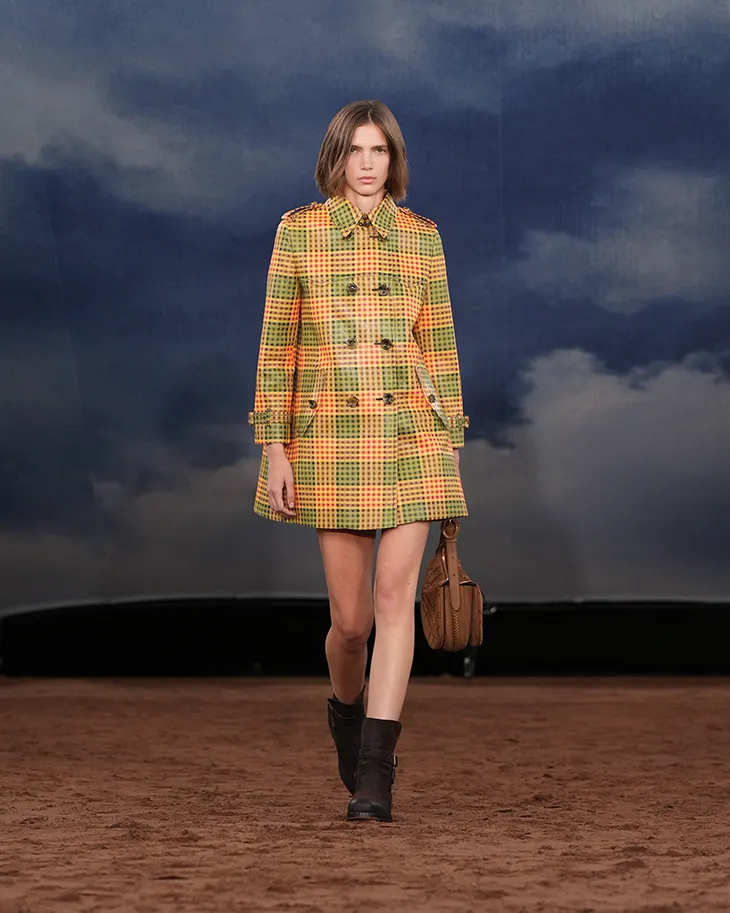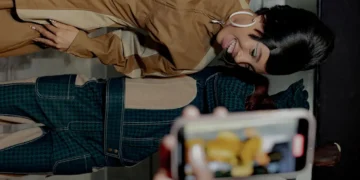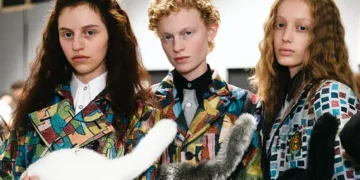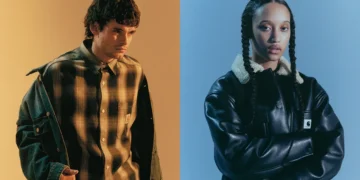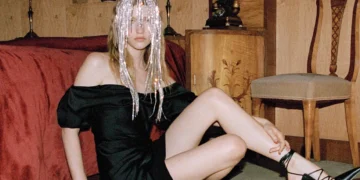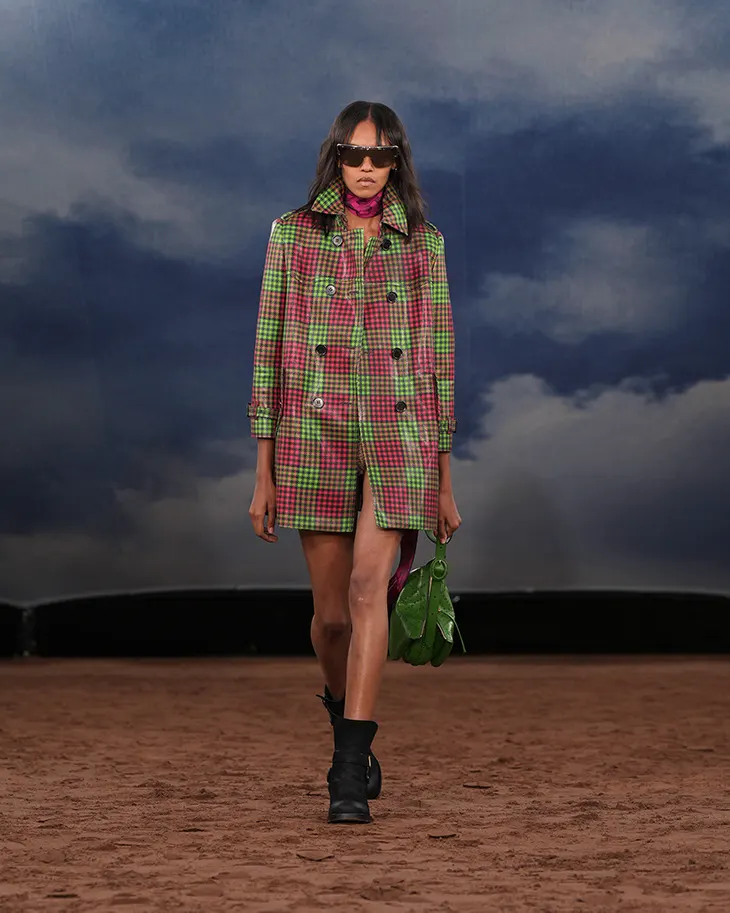
Burberry presented its Summer 2026 collection at Perks Field in Kensington Gardens, returning to the central London site that previously hosted the brand’s shows in 2014, 2015, and 2016. Daniel Lee, Chief Creative Officer, took direct inspiration from the energy of live music in the UK, framing the collection around performance, sound, and the artists who drive cultural change. He described music as a vehicle of self-expression, belonging, and originality, with festivals, concerts, and stadium shows shaping the season’s atmosphere.
The runway space referenced the aesthetics of summer gigs, with an earth-toned set that evoked the textures of outdoor festivals. Seating cubes and natural hues reinforced the connection between stage and field, while Burberry collaborated once again with Benji B, who curated a soundtrack featuring songs from Black Sabbath’s archive. The show tent itself carried the house’s signature gabardine finish, recalling the protective fabric invented by Thomas Burberry, while also providing shelter for guests against the unpredictable British weather.
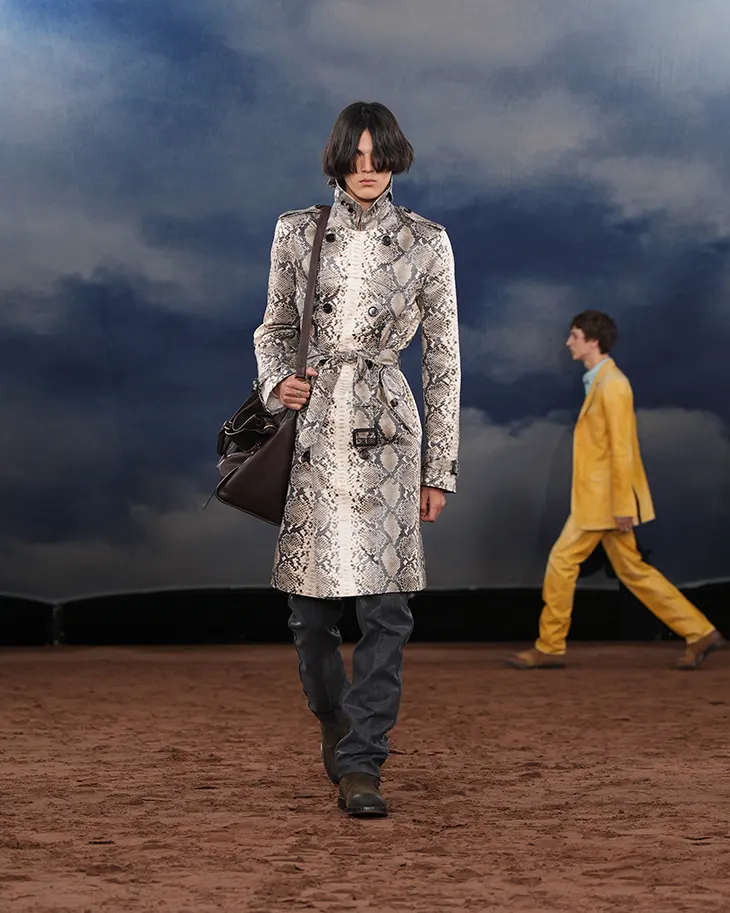

Lee designed the collection with narrow silhouettes, vibrant tones, and rich surfaces. He introduced garments crafted from beads, mirrored tiles, and crocheted leather, while chainmail dresses came in color-blocked Burberry Check. Leather was laser-cut to mimic lace, while whipstitching, fringing, and intricate crochet enhanced the tactile character of the pieces. Slips, shirt dresses, and mini skirts expanded the womenswear vocabulary, while tailoring offered slim jackets in wool, denim, and leather matched with tapered trousers and striped cotton poplin shirts.
House archetypes were spliced with craft-driven details. Trenches incorporated macramé panels, while raincoats in cotton and raffia appeared with flashes of Burberry Check. New outerwear carried the shine of British summertime, with silk bomber jackets, oversized waxed parkas, and foil-coated denim. For men, the Foxfield trench and Harrington jackets joined the new Summerside, Rayne, and Isleworth trenches, which drew archival detail from a 1927 design.
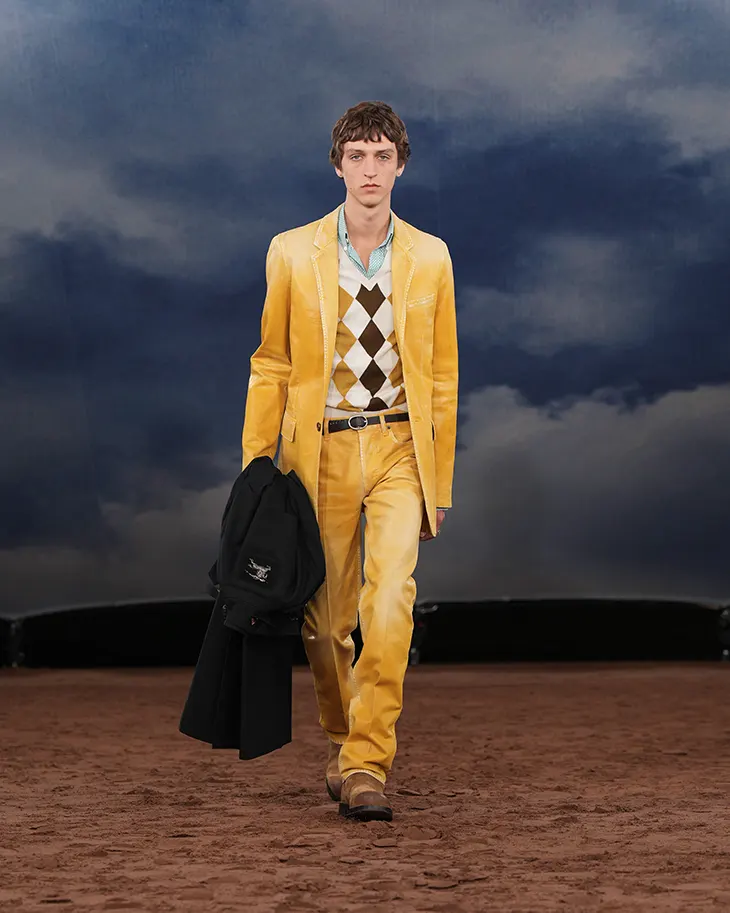
Prints and motifs brought a fresh edge. Tarot-inspired graphics by Pamela Colman Smith appeared on trench coats and silk separates, while embroidered sun and cloud borders decorated shirting. Paisley patterns were laser-cut into calfskin, and daisies introduced a garden theme across trousers and tops. Knitwear used artisanal methods, with macramé panels, crochet trousers, and scarves with exaggerated fringing. The color palette balanced Burberry neutrals, beige, brown, and indigo, with flashes of saturated tones, argyle designs, and tiled jacquards.
Accessories extended the collection’s mix of craft and performance. Bags were slouchy and unstructured, with the Hampstead shoulder bag offered in Burberry Check intarsia leather and a tote version finished with metal studs. Tavistock bags in suede carried whipstitching and perforated checks, while Bridle bags introduced an equestrian-inspired handle. The Equestrian Knight closure defined mini bags and totes trimmed with heavy fringing.
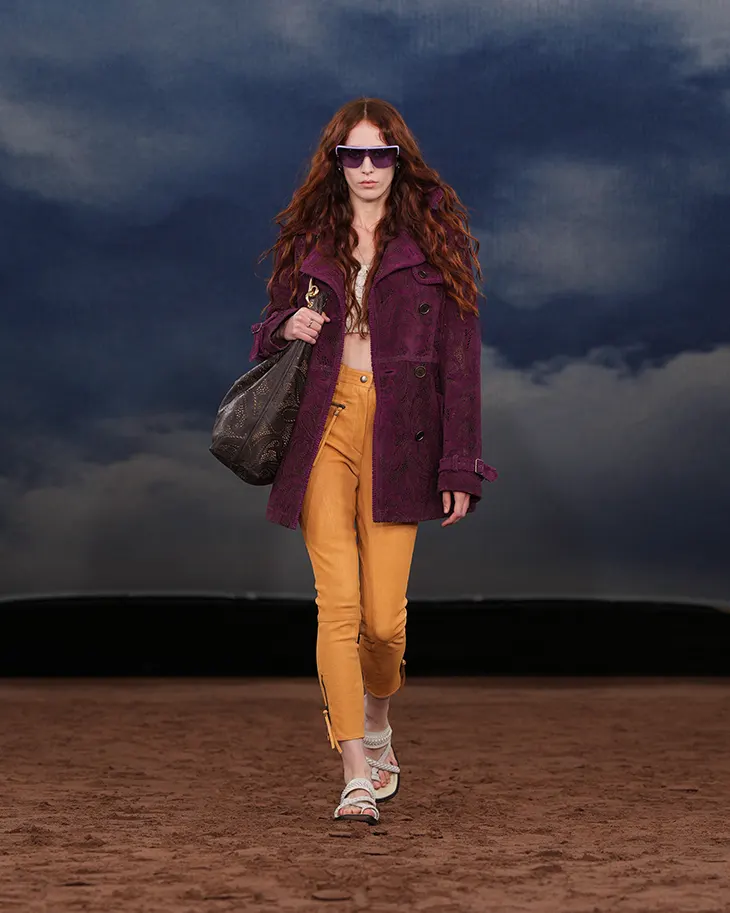
Shoes explored new silhouettes. The Baez sandal carried whipstitch details and studded buckles, while the Tone lace-up boot cut to mid-calf came in Burberry Check canvas or weathered leather. The equestrian-inspired Ledger boot returned in python-print check, waxed suede, and cracked leather.
With Summer 2026, Burberry reaffirmed its ties to music culture while advancing the codes of the house through texture and tailoring. Lee placed emphasis on craft, referencing archival garments while energizing the runway with motifs drawn from British art, gardens, and live sound.
